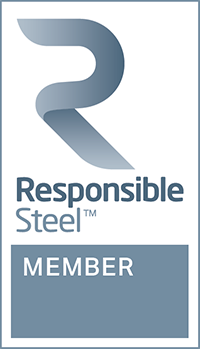TMT Bars vs. Conventional Steel:
Comparing Strength, Flexibility, and Cost Efficiency
The battle between tradition and innovation has raged for centuries in the construction world. One of the most significant arenas of this conflict is the choice between TMT bars and conventional steel for reinforcing concrete structures. As urban skylines evolve, so do the materials that shape them. In this dynamic landscape, the clash between the best TMT bars and conventional steel is a topic that demands exploration.
Unveiling the Mighty TMT Bars:
TMT bars, or Thermo-Mechanically Treated bars, have emerged as the shining knight in modern construction. Crafted through a sophisticated heating, quenching, and tempering process, these bars possess exceptional strength and flexibility. Unlike their conventional steel counterparts, TMT bars have a reinforced outer layer that grants them the ability to endure high levels of stress and strain without succumbing to brittleness.
Strength to Rival Titans:
Their remarkable strength is the primary factor that thrusts TMT bars into the limelight. These bars inherit their robustness from the advanced manufacturing process they undergo. With superior tensile strength and ductility, TMT bars are engineered to withstand seismic forces and harsh environmental conditions. This enhances the structural integrity of a building and extends its lifespan, making it a prime choice for residential and commercial projects.
Flexibility Redefined:
TMT bars come armed with an inherent advantage—flexibility. This unique characteristic is attributed to the distinctive design integrating a soft ferrite-pearlite core with a solid martensite-perlite outer layer. The result? A material that can flex and bend without sacrificing strength. Conventional steel, on the other hand, lacks this dual-natured structure, making it prone to cracks and fractures when subjected to excessive strain.
Cost Efficiency: Beyond the Surface:
At first glance, the cost factor might appear to favour conventional steel. However, a deeper analysis paints a different picture. While TMT bars might have a higher initial cost, their long-term benefits far outweigh this consideration. Thanks to their prolonged lifespan and reduced maintenance requirements, structures built using TMT bars experience lower repair and replacement costs over time. This balance tips even further when considering the potential loss of human lives and property due to structural failures in the case of conventional steel usage.
Navigating the Steel Brands in India:
When embarking on selecting the best TMT bars for a project, navigating the sea of steel brands in India can be daunting. However, a few renowned players have consistently stood out in the industry. Brands like JSW Steel have garnered trust and admiration for delivering TMT bars that meet stringent quality standards and perform remarkably in diverse construction scenarios.
In conclusion, the contest between TMT bars and conventional steel is not merely a battle of materials but a clash of progress against tradition. While conventional steel has its place in history, TMT bars represent the fusion of cutting-edge technology and age-old wisdom. Their unmatched strength, flexibility, and long-term cost efficiency make them a beacon of hope in the ever-evolving construction landscape. So, as the urban horizon continues to transform, let us keep in mind the words of innovation advocate Buckminster Fuller, "You never change things by fighting the existing reality. To change something, build a new model that makes the existing model obsolete." It's safe to say that TMT bars embody this new model, guiding us towards a future where construction is not just about erecting structures but about creating a legacy of safety, durability, and progress.




